Powerful! James Webb Space Telescope’s first observations of Mars
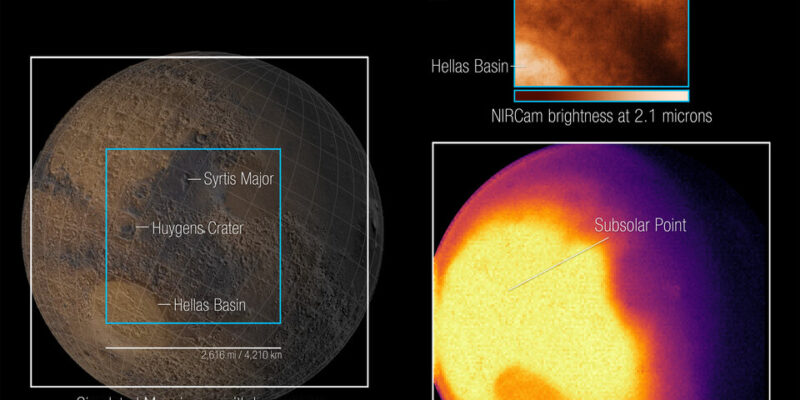
Webb’s unique observation post nearly 1.5 million kilometres away at the Sun-Earth Lagrange point 2 ( L2 ) provides a view of Mars’ observable disk ( the portion of the sunlit side that is facing the telescope ). As a result, Webb can capture images and spectra with the spectral resolution needed to study short-term phenomena like dust storms, weather patterns, seasonal changes, and, in a single observation, processes that occur at different times ( daytime, sunset, and nighttime ) of a Martian day.
A Big Challenge
“Mars is so bright, that the challenge is how to see it,” NASA Planetary Systems Laboratory at Goddard Space Flight Center scientist and lead investigator Giuliano Liuzzi said in an EPSC press conference to mark the release of the images.
Because it is so close, the Red Planet is one of the brightest objects in the night sky in terms of both visible light ( which human eyes can see ) and the infrared light that Webb is designed to detect. This poses special challenges to the observatory, which was built to detect the extremely faint light of the most distant galaxies in the universe. Webb’s instruments are so sensitive that without special observing techniques, the bright infrared light from Mars is blinding, causing a phenomenon known as “detector saturation.” Astronomers adjusted for Mars’ extreme brightness by using very short exposures, measuring only some of the light that hit the detectors, and applying special data analysis techniques.
Webb’s first images of Mars, captured by the Near-Infrared Camera ( NIRCam ), show a region of the planet’s eastern hemisphere at two different wavelengths, or colours of infrared light.
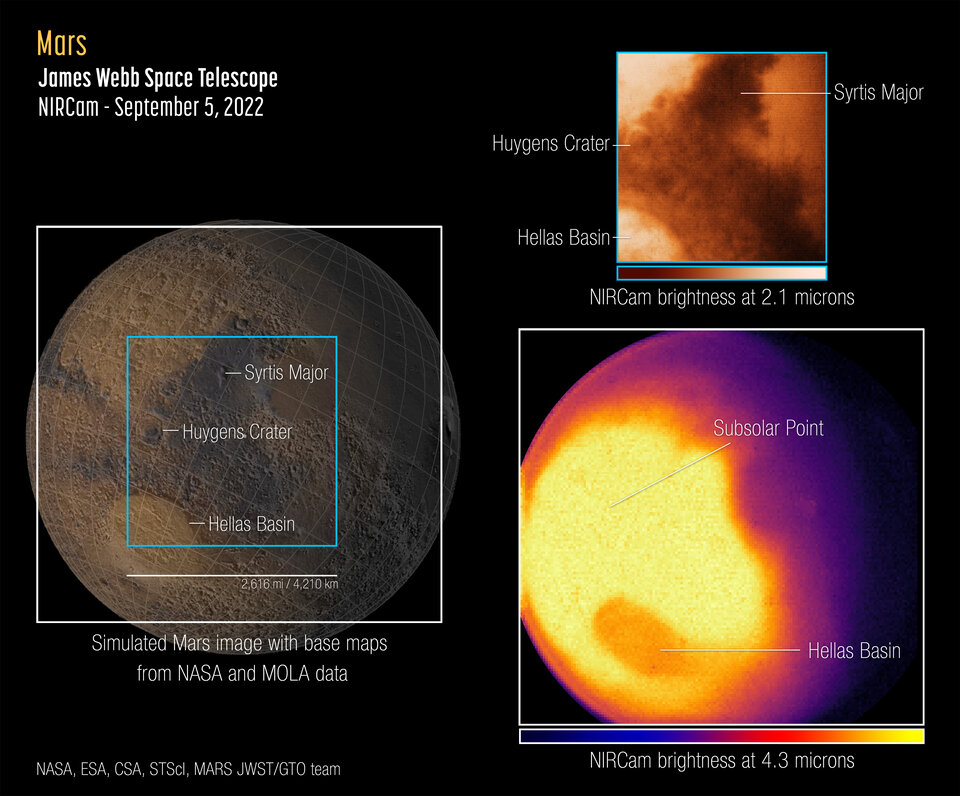
First Webb observations of Mars
This image shows a surface reference map from NASA and the Mars Orbiter Laser Altimeter ( MOLA ) on the left, with the two Webb NIRCam instrument field of views overlaid. The near-infrared images from Webb are shown on the right.
Webb’s first near-infrared spectrum of Mars, captured by the Near-Infrared Spectrograph ( NIRSpec )[1], demonstrates Webb’s power to study the Red Planet with spectroscopy.
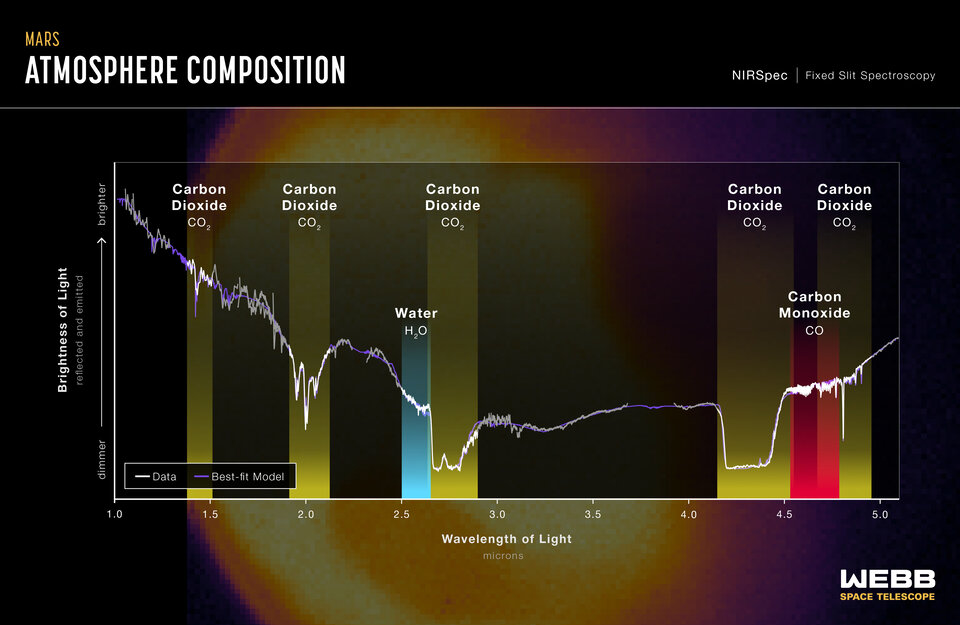
First Webb infrared spectrum of Mars
Whereas the Mars images show differences in brightness integrated over a large number of wavelengths from place to place across the planet at a particular day and time, the spectrum shows the subtle variations in brightness between hundreds of different wavelengths representative of the planet as a whole. Astronomers will analyse the features of the spectrum to gather additional information about the surface and atmosphere of the planet.
In the Future
In the future, Webb will be using this imaging and spectroscopic data to explore regional differences across the planet, and to search for trace species in the atmosphere, including methane and hydrogen chloride.
These observations of Mars were conducted as part of Webb’s Cycle 1 Guaranteed Time Observation ( GTO )[2]Solar System program led by Heidi Hammel of the Association of Universities for Research in Astronomy (AURA).
ESA operates two Mars orbiters, Mars Express[3] and the ExoMars Trace Gas Orbiter[4], that have brought a treasury of insight into the Red Planet’s atmosphere and surface. Furthermore, ESA collaborates with the Japanese Aerospace Exploration Agency ( JAXA ) on the Martian Moons eXploration ( MMX ) mission, soon to launch for Mars’ moon Phobos.
References:
[2]ESA – Selection of the first James Webb Space Telescope General Observer Scientific Programmes
[5]ESA – Mars is mighty in first Webb observations of Red Planet
[6]Mars Is Mighty in First Webb Infrared Spectrum of Red Planet | ESA/Webb (esawebb.org)

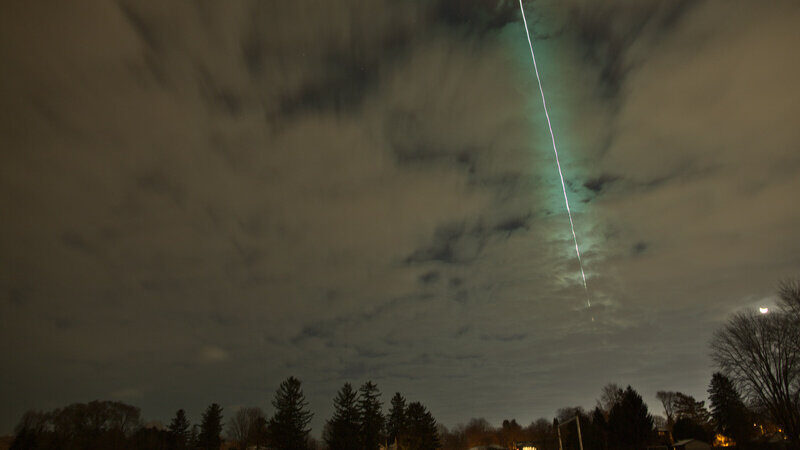
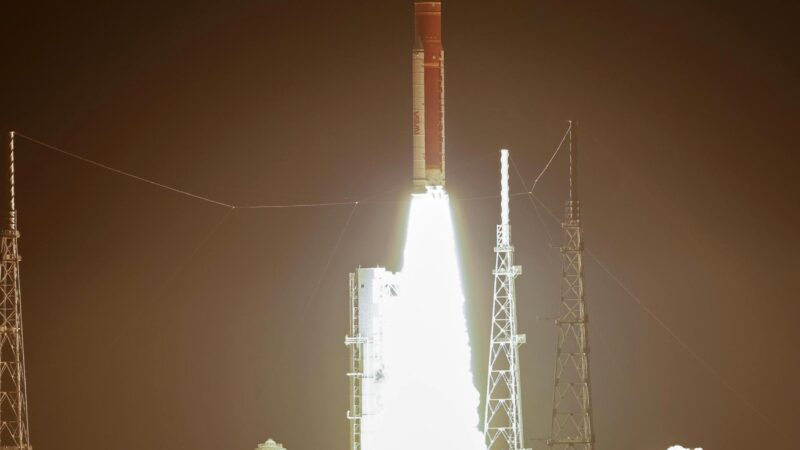

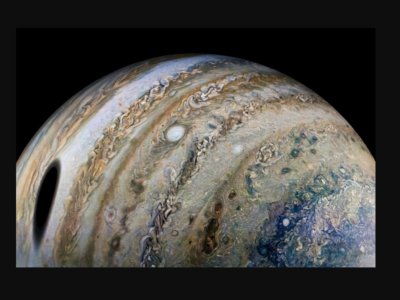
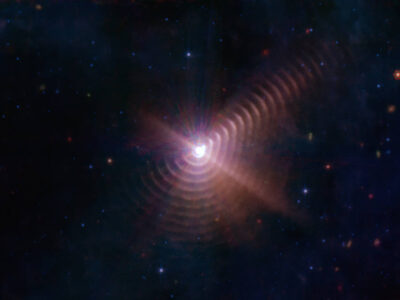
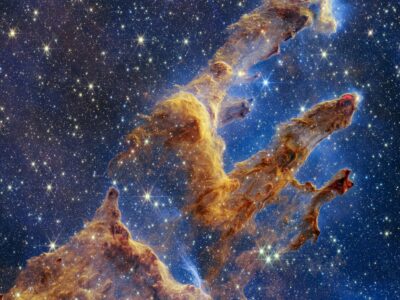
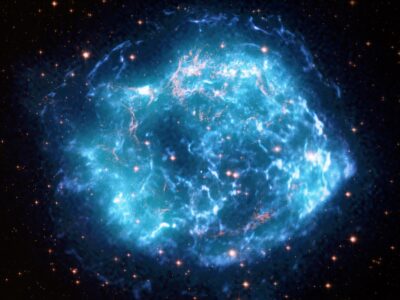



Webb can always surprise us!